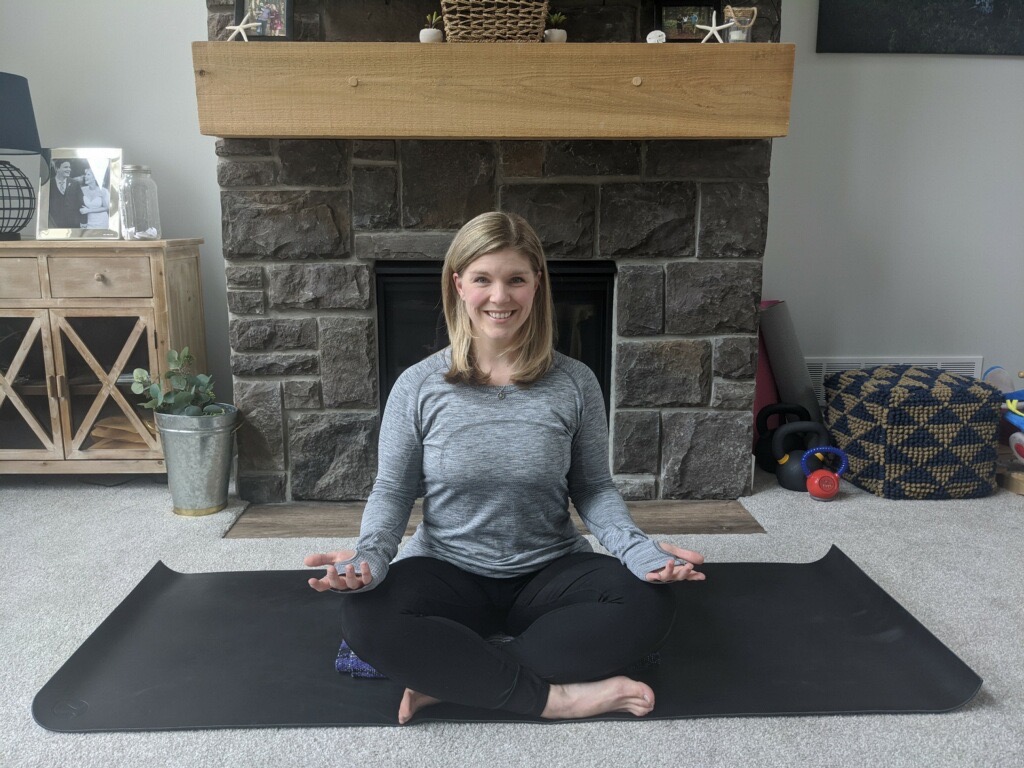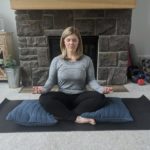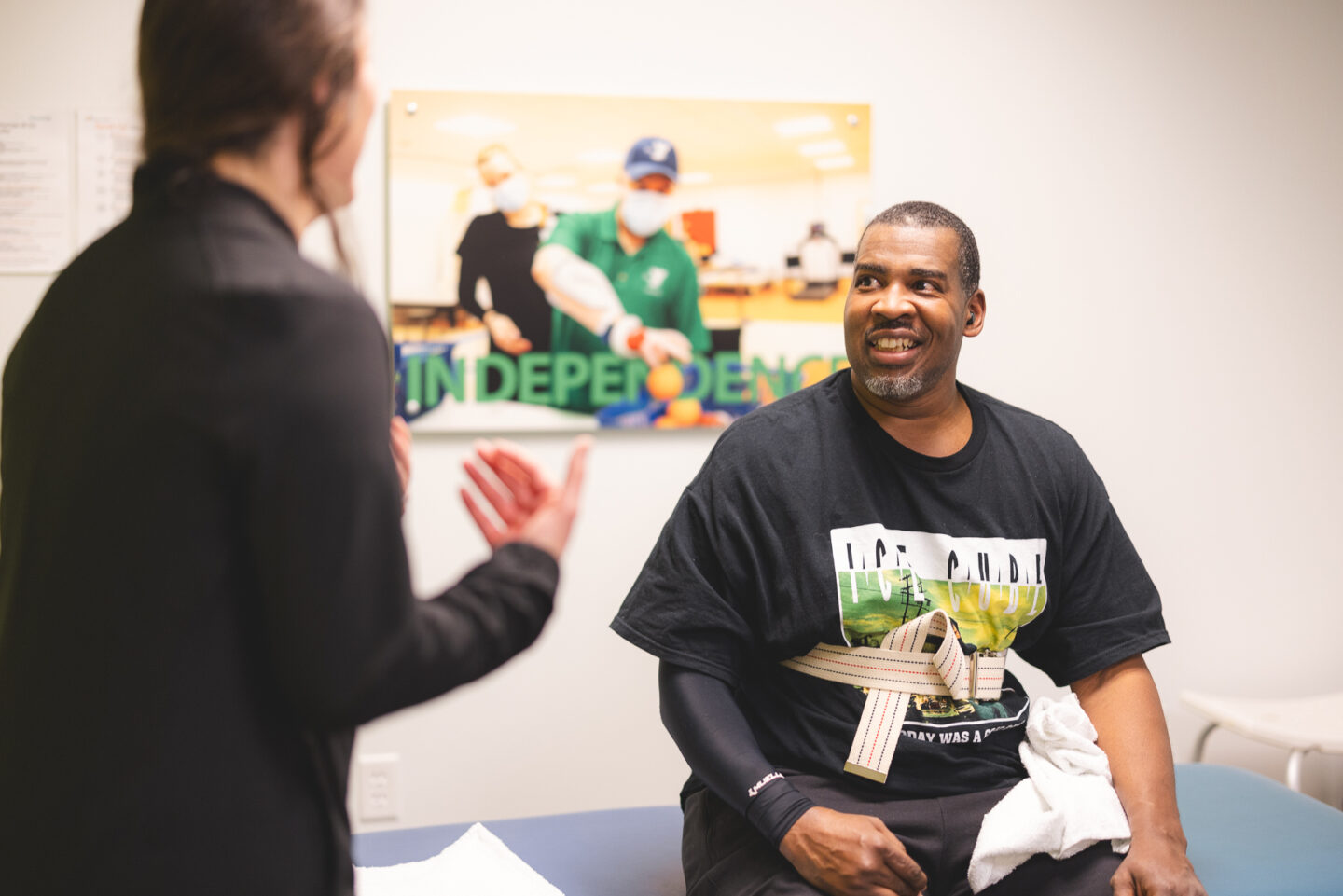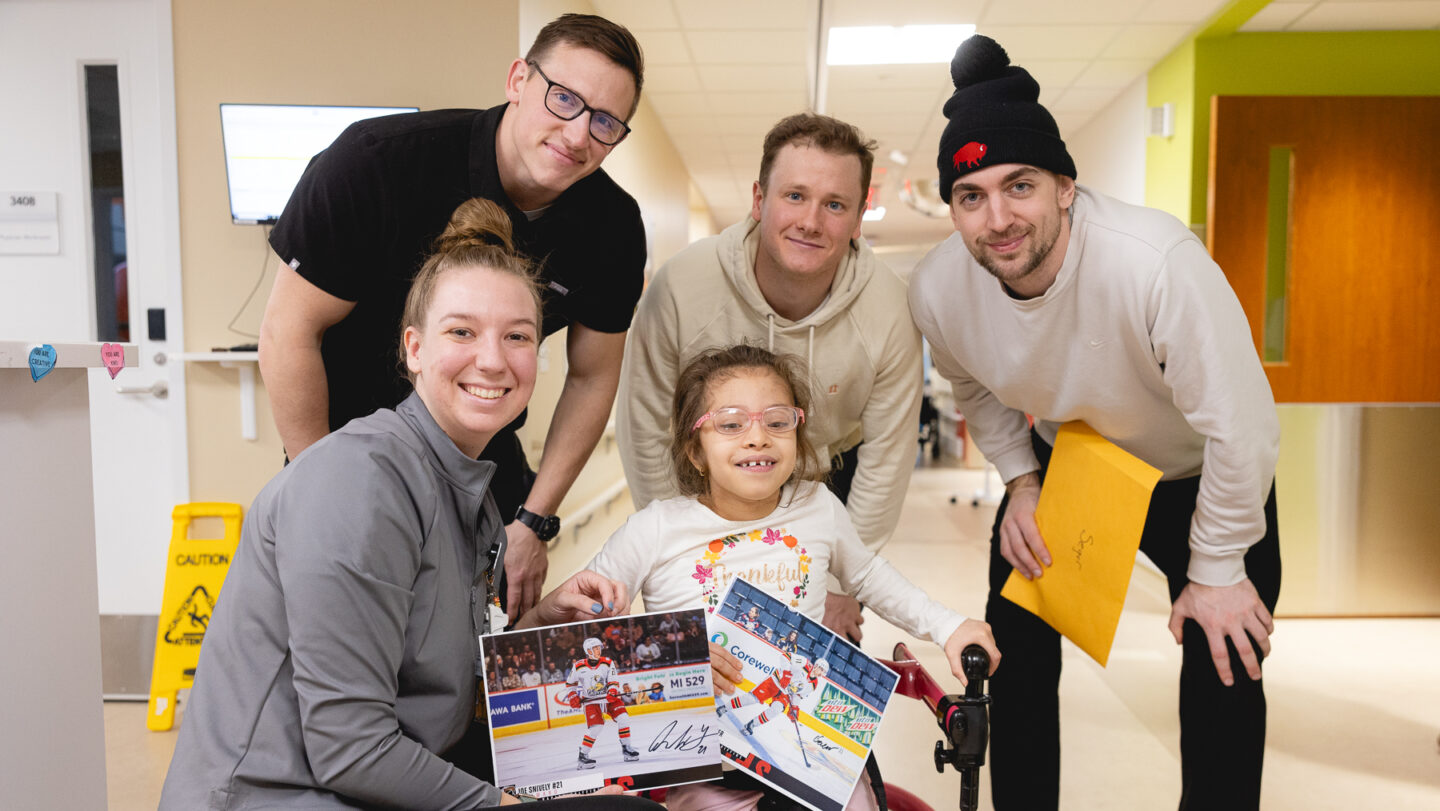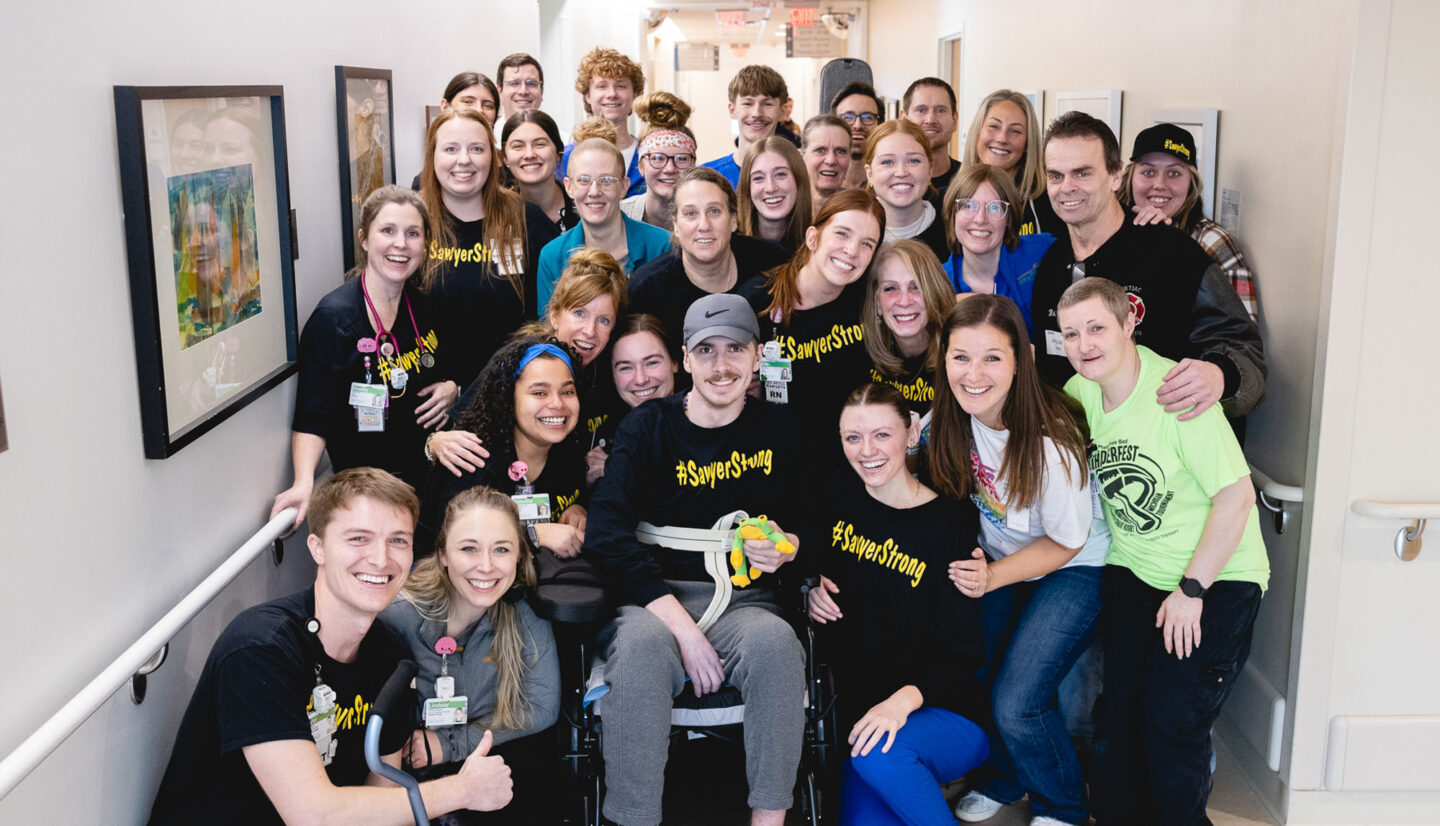Posted on May 13, 2020
Simple meditation, yoga practice can provide calm, clarity, positive health benefits
From our experts: Dr. Colleen Sullivan is a physical medicine and rehabilitation physician at Mary Free Bed. She’s also a registered yoga teacher.
The pace of our lives was exponentially increasing. We were on auto pilot, moving full speed ahead from the moment we woke up to the time we tucked ourselves into bed. Finding a few minutes to rest and breathe felt impossible. Even if we did have time to sit, we found it hard to quiet our minds. Our internal to-do list was constantly getting longer.
The COVID-19 pandemic changed all of that. Now it seems all we have is time. But while our to-do list may be shorter, our worries are growing. We can find time to sit, but our minds are still racing. What if I told you that, starting with just two minutes a day, you could clear your mind, improve your mood, help with focus and even lower your blood pressure? A daily meditation practice can produce benefits that positively affect every aspect of our lives. Now, more than ever, we need to breathe.
To some, meditation may sound like new-age mumbo-jumbo, but it’s been practiced for millions of years for religious, physical, spiritual and mental purposes. There are many scientific studies on meditation and health. Some of these show that meditation can help to ease insomnia, lower blood pressure, decrease pain, improve symptoms of depression and help to alleviate anxiety. But what is it exactly? Meditation is a practice of mental training to intentionally create a sense of calm and clarity.
Meditation can be performed seated, eyes closed, in a quiet space. This is what many of us picture when we hear the word “meditate.” In other situations, mental calm and clarity is achieved in combination with a physical practice. This is yoga.
Yoga also helps to reduce anxiety and depression. It strengthens and stretches our bodies to help restore balance and alignment. Yoga isn’t necessarily an athletic practice, touching your toes and standing on your head. Yoga is accessible to anyone and every physical body with the right guidance. It’s a practice of linking breath and physical postures to produce a moving meditation.
There are many types of yoga and meditation. Finding the right one for you is a journey well worth the effort. If you are ready to dip your toes into the water, let’s start with a breathing exercise.
Box breathing
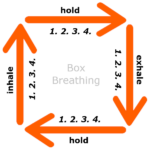 My favorite exercise to start to control the mind and the breath is called box breathing. Navy Seals have been teaching this method of breath control for decades to help with focus. It can be performed anywhere – backstage before you walk to the podium to give a lecture presentation, in a crowded elevator that just got stuck, in bed when you can’t fall asleep, in the shower, on your yoga mat, or right here at your computer! All you need is the ability to count to four and your breath:
My favorite exercise to start to control the mind and the breath is called box breathing. Navy Seals have been teaching this method of breath control for decades to help with focus. It can be performed anywhere – backstage before you walk to the podium to give a lecture presentation, in a crowded elevator that just got stuck, in bed when you can’t fall asleep, in the shower, on your yoga mat, or right here at your computer! All you need is the ability to count to four and your breath:
- Breathe in through your nose to a count of four, allowing your lungs and then belly to fill with air.
- At the top of your inhale, hold your breath for a count of four.
- Exhale fully for a count of four.
- Hold again at the bottom of your “box” for a count of four. Then repeat.
Yoga for meditation, breathing
Ready to add in some yoga poses? Here are my three favorite postures for meditation and breathing.
Seated on the floor, cross your legs. Allow your knees to fall toward the ground and your sit bones to root down. Imagine a string pulling up from the crown of your head through your spine, allowing you to grow one inch taller. Rest the backs of your hands on your knees, palms facing up.
- Child’s Pose (Balasana)
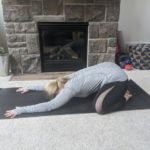 From kneeling, separate your knees but keep your big toes in contact with each other. Begin to walk your hands out on the floor in front of you, while you stay seated on your heels. Stretch out your arms and allow your chest to fall into the space between your knees. Rest your forehead on the floor. Your seat may come up off your heels; encourage it back down. Allow your heart and your hips to melt toward the floor.
From kneeling, separate your knees but keep your big toes in contact with each other. Begin to walk your hands out on the floor in front of you, while you stay seated on your heels. Stretch out your arms and allow your chest to fall into the space between your knees. Rest your forehead on the floor. Your seat may come up off your heels; encourage it back down. Allow your heart and your hips to melt toward the floor.
- Fish Pose (Matsyasana)
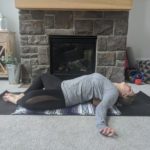 With a pillow or block between your shoulder blades, relax down onto the floor. Allow your head to connect with the ground below. You should feel a small backbend and your chest opening. Rest your arms on the floor with your palms facing up. You can bring the soles of your feet together and knees out wide or take up space with your legs outstretched in front of you.
With a pillow or block between your shoulder blades, relax down onto the floor. Allow your head to connect with the ground below. You should feel a small backbend and your chest opening. Rest your arms on the floor with your palms facing up. You can bring the soles of your feet together and knees out wide or take up space with your legs outstretched in front of you.
For more information, connect with me on Instagram @stronghappyhealthymd.



